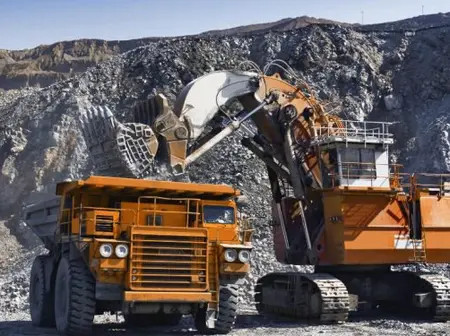The global race for critical minerals and rare earth elements is intensifying, with Africa emerging as a central battleground, writes Nicasio Karani Migwi.
As countries accelerate the transition to clean energy and digital technologies, competition over minerals and resources vital for electric vehicles, renewable power, defense systems, and advanced electronics- is reshaping geopolitics and supply chains.
Critical minerals are resources “essential to the economy and whose supply may be disrupted,” as defined by the American Geosciences Institute. The U.S. currently lists 50 of them, including aluminium, cobalt, lithium, nickel, graphite, and rare earths. The U.S. Energy Act of 2020 adds “critical materials” as non-fuel minerals at high risk of supply disruption but indispensable for energy technologies such as batteries, wind turbines, and solar panels.
Rare earth elements (REEs)- 17 metals including lanthanides, scandium, and yttrium- are especially strategic. They are not truly “rare,” but difficult to extract and separate. They are ‘rare’ due to the difficulty in separating them and being ‘hidden’ behind others. They enable everything from smartphones and flat-screen TVs to military guidance systems, robotics, and renewable energy infrastructure. Companies like Lynas Rare Earths describe them as indispensable and non-replaceable in modern technology.
The race for these resources is especially critical now because they are directly tied to climate goals. Achieving the Paris Agreement’s ambitious target of limiting global warming to 1.5°C requires unprecedented volumes of critical minerals, raising the stakes for who controls and has access to the vast reserves and processing capacity to economically benefit.
Their concentration also creates supply risks and expose industries to geopolitical manoeuvring. Known reserves of bauxite, for example, are concentrated in just four countries: Guinea (24.7%), Australia (24.5%), Guinea (24.25%), China (23.25%).
Kazakhstan holds 41% of chromium reserves, used in geothermal, concentrated solar power (CSP), wind turbines, and nuclear power plants, followed by South Africa (36%), while the DRC dominates cobalt reserves (54.6%), with China controlling 76% of processing. China controls 77% of processing and holds 28% of graphite reserves, making it essential to the mineral, which is used in battery anodes, transition to EVs and electricity grids stationary batteries but faces silicon and lithium substitutes. South Africa leads in both production (36%) and reserves (32%) of manganese, which is used in solar and wind power, EVs lithium-ion batteries and strengthening steel.
With this concentration and the increasing importance of critical minerals, governments have been rushing to secure access, both within their borders and across the globe. China has revised its Mineral Resources Law (2024) and maintains export controls to protect national interests.
The EU introduced the Critical Raw Materials Act to support climate and digital targets by 2030 while the U.K. and Australia have unveiled Critical Minerals Strategies, Canada released its version in 2022, and the US has at least three laws on critical minerals. Africa is also advancing: the African Union launched its Green Minerals Strategy, Zambia has a National Critical Minerals Strategy, and South Africa is pursuing new legislation.
Washington is deepening ties with allies, including Canada, Greenland, Ukraine, and the DRC, to secure supplies of uranium, cobalt, lithium, and rare earths. The competition for DRC’s vast mineral wealth has become especially important in the US-China trade war, as both countries double down on infrastructure investments, especially transport links between ports and the DRC.
With abundant reserves of cobalt, manganese, graphite, and rare earths, Africa is central to the ongoing clean energy transition. Yet the continent faces familiar challenges such as ensuring local beneficiation, balancing environmental sustainability, and negotiating fair terms in global supply chains. The geopolitical scramble over its resources is only set to intensify.

Leave a Reply